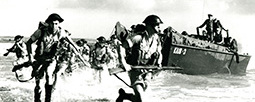Featured Events
X-
- Search
APAARTTWO764764
apaarttwo764764
X

Although we may now look back at pictures like this one with nostalgia for a lost Paris, to Marville and his audience such scenes evoked a less bucolic reality-the Bi�vre was essentially a waste system for twenty-four tanneries, twenty-one leather factories, nine starch and three dye manufacturers, a paper mill, two cotton and two flour mills, four laundries, a soap and candle factory, and assorted other industries. Shortly after Marville made this photograph, the Bi�vre was simply covered over and tied into the Paris sewer system.
One motivation for Napoleon III's urban plan was to ease military movement and make it more difficult for revolutionaries to barricade narrow streets and control sections of Paris, but many of his efforts were genuinely geared toward transforming Paris into a safer, healthier, more modern city. Museum: Metropolitan Museum of Art, New York, USA.
Album / Metropolitan Museum of Art, NY
La Bi�vre. Artist: Charles Marville (French, Paris 1813-1879 Paris). Dimensions: 27.8 x 37.6 cm. (10 15/16 x 14 13/16 in.). Date: ca. 1865.
As the official "photographer of the city of Paris," Charles Marville was charged with documenting the massive transformation of the city brought about by Napoleon III and his city planner, Baron Haussmann. In the early 1850s the Emperor proposed a network of grand boulevards that would plow through the narrow winding streets and overcrowded slums of Paris. Marville methodically recorded the streets and buildings slated for demolition, preserving an image for future generations.
Although we may now look back at pictures like this one with nostalgia for a lost Paris, to Marville and his audience such scenes evoked a less bucolic reality-the Bi�vre was essentially a waste system for twenty-four tanneries, twenty-one leather factories, nine starch and three dye manufacturers, a paper mill, two cotton and two flour mills, four laundries, a soap and candle factory, and assorted other industries. Shortly after Marville made this photograph, the Bi�vre was simply covered over and tied into the Paris sewer system.
One motivation for Napoleon III's urban plan was to ease military movement and make it more difficult for revolutionaries to barricade narrow streets and control sections of Paris, but many of his efforts were genuinely geared toward transforming Paris into a safer, healthier, more modern city. Museum: Metropolitan Museum of Art, New York, USA.La Bi�vre. Artist: Charles Marville (French, Paris 1813-1879 Paris). Dimensions: 27.8 x 37.6 cm. (10 15/16 x 14 13/16 in.). Date: ca. 1865.
As the official "photographer of the city of Paris," Charles Marville was charged with documenting the massive transformation of the city brought about by Napoleon III and his city planner, Baron Haussmann. In the early 1850s the Emperor proposed a network of grand boulevards that would plow through the narrow winding streets and overcrowded slums of Paris. Marville methodically recorded the streets and buildings slated for demolition, preserving an image for future generations.
Although we may now look back at pictures like this one with nostalgia for a lost Paris, to Marville and his audience such scenes evoked a less bucolic reality-the Bi�vre was essentially a waste system for twenty-four tanneries, twenty-one leather factories, nine starch and three dye manufacturers, a paper mill, two cotton and two flour mills, four laundries, a soap and candle factory, and assorted other industries. Shortly after Marville made this photograph, the Bi�vre was simply covered over and tied into the Paris sewer system.
One motivation for Napoleon III's urban plan was to ease military movement and make it more difficult for revolutionaries to barricade narrow streets and control sections of Paris, but many of his efforts were genuinely geared toward transforming Paris into a safer, healthier, more modern city. Museum: Metropolitan Museum of Art, New York, USA.
; CHARLES MARVILLE CHARLES MARVILLE CHARLES MARVILLE ; ;
Post Date:
Sep 4, 2020 5:22 AM
TAG ID:
apaarttwo764764 (RM)
Credit:
Album / Metropolitan Museum of Art, NY/Newscom
Format:
4166 x 3158 JPEG
Photographer:
Album / Metropolitan Museum of Art, NY
Keywords:
, FRANCIA, , FRANCE, , EUROPA, , EUROPE, , FOTOGRAF�AS, , PHOTOGRAPHS, , ALBUMINA GRABADOS DE PLATA, , ALBUMEN SILVER PRINTS, , ALBUMEN SILVER PRINT FROM GLASS NEGATIVE, , PARIS, , PARIS, , MIDDLE, , MEDIA, , MIDDLE, , PAISAJE URBANO, , CITYSCAPE, , 1860, , 1860, , NEIGHBORHOOD, , FRANCES, , FRENCH, , FOTOGRAFIA, , PHOTOGRAPH, , CIUDAD, , CITY, , CALLE, , STREET, , MARVILLE, , CRV, , HISTORIA, , HISTORY, , SIGLO XIX, , 19TH CENTURY, , PHOTOGRAPHY, , ROAD, , ARQUITECTURA, , ARCHITECTURE, , ARCHITECTURAL, , ARQUITECTONICO, , ARQUITECTONICA, , ARCHITECTURE, , OBRAS, , CONSTRUCCION, , CONSTRUCTION SITE, , SETTING UP, , CONSTRUCTION, , GEOGRAFIA, , GEOGRAPHY, , FACHADA, , FACADE, , ART, , ARTES, , ART, , ARTS, , LEGEND, , TOPOGRAFIA, , TOPOGRAPHY, , VISTA, , STANDPOINT, , VIEWPOINT, , PANORAMIC VIEW, , CASCO ANTIGUO, , CASCO VIEJO, , CIUDAD ANTIGUA, , BARRIO ANTIGUO, , CIUDAD VIEJA, , CASCO HISTORICO, , OLD TOWN, , OLD PART OF CITY, , OLD CITY, , URBAN PLANNING, , CONSTRUCTION OF CITY, , DEMOLICION, , DEMOLITION, , HAUSSMANISMO, , HAUSSMANNISM, , BARRIO POBRE, , SLUM, , PAPEL DE ALBUMINA, , ALBUMINIZED PAPER, , RIO, , RIVER, , CABA�A, , CASA DE CAMPO, , HUT, , HOUSE, , COUNTRY HOUSE, , COUNTRY VILLA, , COUNTRY COTTAGE, , COTTAGE, , CABIN, , COUNTRYHOUSE, , EXTERIOR, , EXTERIOR, , OUTER, , EXTERNAL, , EDIFICIO, , EDIFICIOS, , BUILDING, , EDIFICIO, , BUILDINGS, , EDIFICIOS, , 2ND MILLENNIUM A. D., , PLACES AND TRAVEL, , FUNCIONARIO, , OFICIAL, , CIVIL SERVANT, , OFFICERS, , OFFICER, , OFFICIAL, , �A, , 10, , 10, , NAPOLEON III, , NAPOLEON III, , DOCUMENTING, , 1865, , 1865, , CHARGED, , FOTOGRAFO, , PHOTOGRAPHER, , BARON HAUSSMANN, , CHARLES MARVILLE, , CITY PLANNER, , IMPRESI�N DE PLATA DE ALB�MINA, , ALBUMEN SILVER PRINT, , PLACA FOTOGR�FICA, , GLASS NEGATIVE, , 13/16, , 15/16, , X 14, , LA BIEVRE, , 27.8 X 37.6 CM, , 1813�1879, , MASSIVE TRANSFORMATION, , PARIS, MUSEE CARNAVALET, , INDUSTRIA, , INDUSTRIAS, , INDUSTRY, , INDUSTRIAL, , INDUSTRIAL, , CANALIZACION, , SEWER SYSTEM, , SEWERAGE, , CANALIZATION, , PA�S, , COUNTRY, , TGN, , CHARLES, , CHARLES, , BLANCO Y NEGRO, , BLACK AND WHITE, , BLACK & WHITE, , CANAL, , CANAL, , WASTE, , PAISAJE, , PAISAJES, , LANDSCAPE, , LANDSCAPES, , SIGLO, , CENTURY, , LOCATION, , TRANSPORTE, , TRANSPORTATION, , NINETEENTH CENTURY, , URBANO, , URBAN, , TRANSPORTE ACUATICO, , WATER TRANSPORT, , TRANSPORT, , ALBUMEN PRINT, , MET, THE, , MUSEO, , MUSEUM,
Release Status:
No Model Release, No Property Release
Please submit a licensing request for pricing on this usage.











